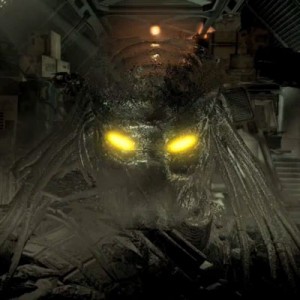 We’re all probably familiar with the famous story of how United States’ cloaking technology was created…but if you’re not, allow me to retell it.
We’re all probably familiar with the famous story of how United States’ cloaking technology was created…but if you’re not, allow me to retell it.
Way back in the 80’s, right around the time that Michael Jackson was moving from his natural Mocha complexion and onto whiter frontiers, a U.S. general and his staff sat down to watch a little Arnold Schwarzenegger flick by the name of Predator. Being so impressed with the Predator’s field superiority, the General leaned over towards one of his colleagues and said “I want that f***ing technology!!!”…and that was the exact moment when cloaking research and development was born.
Since then, we’ve all seen some type of ‘invisibility cloak’ on display in various futuristic war games and simulators, and the military itself has admitted that it’s well on its way to having a fully functioning piece of field equipment.
 But this is what’s really blown my mind, what this whole article is about….apparently the U.S. government has also developed equipment for “Time Cloaking”. Yes, it’s every bit as scary and far-fetched as it sounds. Apparently they’ve made a device that can bend lightwaves so that time appears distorted in a particular geometric area, concealing anything from a simple rolling ball to something as large as an entire military operation.
But this is what’s really blown my mind, what this whole article is about….apparently the U.S. government has also developed equipment for “Time Cloaking”. Yes, it’s every bit as scary and far-fetched as it sounds. Apparently they’ve made a device that can bend lightwaves so that time appears distorted in a particular geometric area, concealing anything from a simple rolling ball to something as large as an entire military operation.
I’m no expert on the subject, so I’m sorry if I butchered the explanation. Here’s an excerpt from our friends at PhysOrg who’ve tried their hardest to dumb this down.
Another way to think of it is as if scientists edited or erased a split second of history. It’s as if you are watching a movie with a scene inserted that you don’t see or notice. It’s there in the movie, but it’s not something you saw, said study co-author Moti Fridman, a physics researcher at Cornell.
The scientists created a lens of not just light, but time. Their method splits light, speeding up one part of light and slowing down another. It creates a gap and that gap is where an event is masked.
“You kind of create a hole in time where an event takes place,” said study co-author Alexander Gaeta, director of Cornell’s School of Applied and Engineering Physics. “You just don’t know that anything ever happened.”
So what’d you guys think? It appears the future is here, and it’s a little more frightening, albeit awesome, than I would’ve expected.
Here’s an image that tries to illuminate (haha, get it?) the theory behind the technology.












S#!T Talking Central